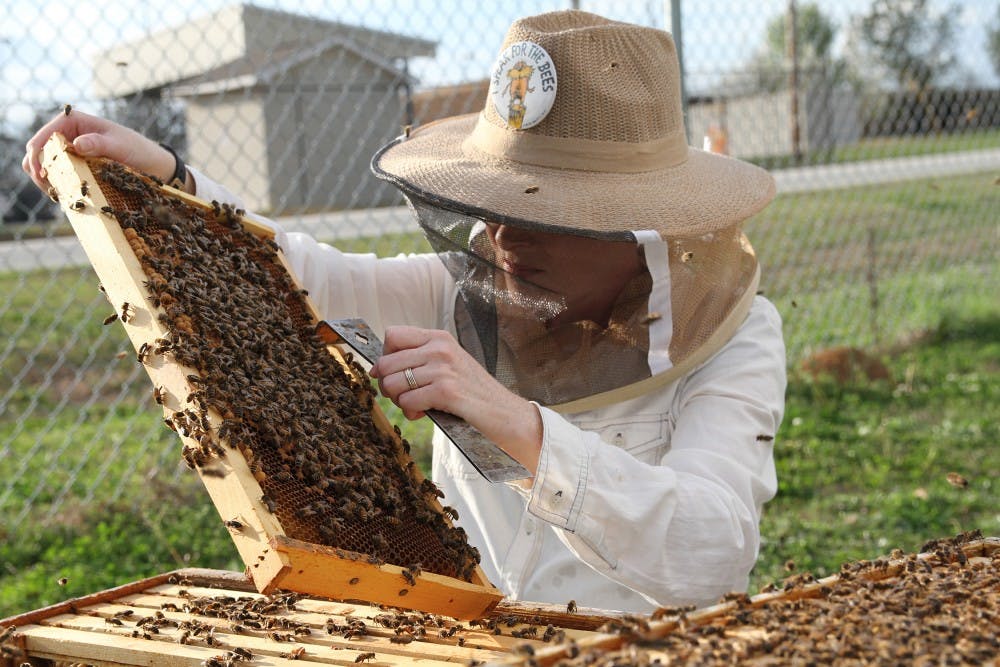New research led in part by Auburn shows another year of drastic decline in the nation's managed honey bee population.
Results of an annual nationwide survey indicate that the nation's beekeepers lost 40 percent of their managed honey bee colonies between April 1, 2017, and March 31, 2018. That up almost 7 percentage points from a year earlier, according to the research from Auburn and the University of Maryland.
There was greater mortality during the 2017 and 2018 winter months, pushing the overall loss rate up. Respondents reported a 30.7 percent rate of loss from October to April, up significantly from the 2016-2017's record low of 21.1 percent. It's 2.8 percent higher than the 10-year average winter loss rate.
“Winter is a critical period for honey bee colonies, as production of new bees slows or stops altogether,” said Geoffrey Williams, Auburn University assistant professor of insect pollination and apiculture and 2017-18 colony loss survey. “There also can be a lack of food.”
Hurricanes in the fall, abnormal temperature patterns and storms in the winter could have contributed to a change in feeding patterns for the bees, which may increase their susceptibility and vulnerability to other issues that contribute to population loss.
Winter is typically the worst time for honey bees, and backyard beekeepers have a worse time than commercial beekeepers. The new study shows that backyard beekeepers lost 46.3 percent of their colonies from 2017-2018 during the six-month winter period. Commercial producers and smaller sideline producers lost only 26.4 percent and 38 percent respectively.
Summer colony mortality isn’t as bad, but it isn’t good, either. Beekeepers lost almost 18 percent of their managed colonies in the summer months of 2017-2018, which is more on par with the 2016-2017 loss rate.
The loss rate in recent years has been so high that beekeepers are now being forced to change their definition of an “acceptable” rate of loss. The 2017-18 data set the acceptable loss rate at 20.6 percent, up from 18.7 percent in 2016-17 and the highest percentage since the survey began in 2006-07.
“We don’t have a solid explanation of why that acceptable rate continues to climb, but it could be that beekeepers are being realistic about potentially higher losses,” Williams said. “For them, it could be the new norm.”
At least 4,794 beekeepers who manage at least 175,923 colonies – about 6.6 percent of the nation’s 2.67 million managed honey bee colonies --- responded to the survey.
The respondents represented all 50 states, D.C. and the U.S. territories. Any beekeeper in the country can participate, from backyard beekeepers who managed 50 or fewer colonies to commercial producers who manage hundreds of colonies.
Several parasites, pests and diseases can contribute to colony mortality, researchers said, but by far the No. 1 enemy of honey bees and beekeepers in the U.S. and around the globe is the varroa mite, an external parasite that is highly reproductive and can spread quickly and easily from one colony to the next. In doing so, the parasite vectors viruses as it feeds on both adult and immature bees.
Bill Evans, a veteran backyard beekeeper in central Alabama, said management is key to preventing the devastating parasites.
“Some hobbyists think they can just put a couple of boxes of bees in their yards and forget about them till it’s time to go harvest some honey, but constant monitoring and sound management practices are absolutely necessary,” Evans said.
Evans is a certified master beekeeper who, in his 25 years of beekeeping, has continuously maintained 10 healthy colonies.
This was the 12th annual national winter colony loss survey, and the eighth survey to include yearly and summer loss rates as well, according to the University.
Beekeepers said the survey is an important tool for the industry.
“This survey is beekeepers’ chance to share their experiences with policymakers who keep thinking the ‘bee problem’ is over,” said retired Florida beekeeper David Mendes. “They need to know that bees and beekeepers are still in jeopardy and need help.”
The Bee Informed Partnership plans to publish a 10-year analysis of survey results from 2007-08 to 2016-17 later this year.
Do you like this story? The Plainsman doesn't accept money from tuition or student fees, and we don't charge a subscription fee. But you can donate to support The Plainsman.




